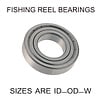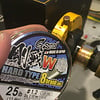Historically, New Zealand snapper involved mostly natural bait, heavy sinkers and monofilament lines. Drop the anchor and drop the bait. Then came softbaits, jerkshads, swimming mullet and minnow — all terms that, a few years ago, were the reserve of American bass anglers. But the advent of braided line has given the angler the ability to get a small jighead (lead-weighted hook) to the sea bed with, for example, a 5 inch softbait, a method that perfectly suits our conditions.The soft bait looks like a fish, swims like a fish and has scented attractants that encourage fish to keep biting. Snapper, once thought to be scavengers, we now know are predatory — striking and actually pursuing softbaits, which is one of the reasons why soft baits are so effective. Anglers using this method report catching larger fish and in places they had never caught fish previously.
Here’s how:
Most soft bait fishing is done on the drift. Cast to where the Boat is drifting (generally over structure or rises that hold fish, over the Waitemata worm beds early season or in work-ups of baitfish with snapper feeding underneath).Find the sea bed with the lure, keep the slack out of the line and give the lure a slight twitch as you slowly retrieve the line as the boat drifts towards the lure.
Fish often take on the drop so an overhead reel, although not widely used, is better suited for this style of fishing. Most use a small spinning reel with a capacity of 150m of braid, usually top shot with braid and with a monofilament backing; a 7 foot rod that’s not to stiff but with some lift in the butt section; for leader about 1.5 to 2meters of fluorocarbon trace of 15-20lb breaking strain (fluorocarbon has good abrasion resistance and low visibility).


 Fishing reel bearings
Fishing reel bearings
 Fishing line - Braid
Fishing line - Braid
 Fishing tackle
Fishing tackle
 Rods & reels
Rods & reels
 Hot deals
Hot deals
 Blog
Blog









